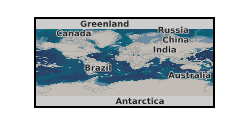1868
Type of resources
Topics
Keywords
Contact for the resource
Provided by
Years
Formats
Update frequencies
-

The aa index is a simple global geomagnetic activity index, with units of 1 nT (nanotesla), which is produced from the K indices from two approximately antipodal observatories. At present these are Hartland observatory in the UK and Canberra observatory in Australia. The main advantage in using aa indices for research purposes is that the time series spans further back (to 1868) than any of the other planetary indices time series.Also, up to date values are produced and made available weekly, giving nearer to real time availability than any other planetary index. In between the weekly updates, BGS calculates estimated aa indices, providing real time "nowcasts" which are updated on an hourly basis. These estimates are clearly marked with the letters "Est". Although calculated by the same method, the aa indices available on this service are not the definitive values. These are published by the International Service for Geomagnetic Indices, CRPE/CNET - CNRS, 4 Avenue de Neptune, F-94107 Saint Maur, Cedex, France.
 NERC Data Catalogue Service
NERC Data Catalogue Service